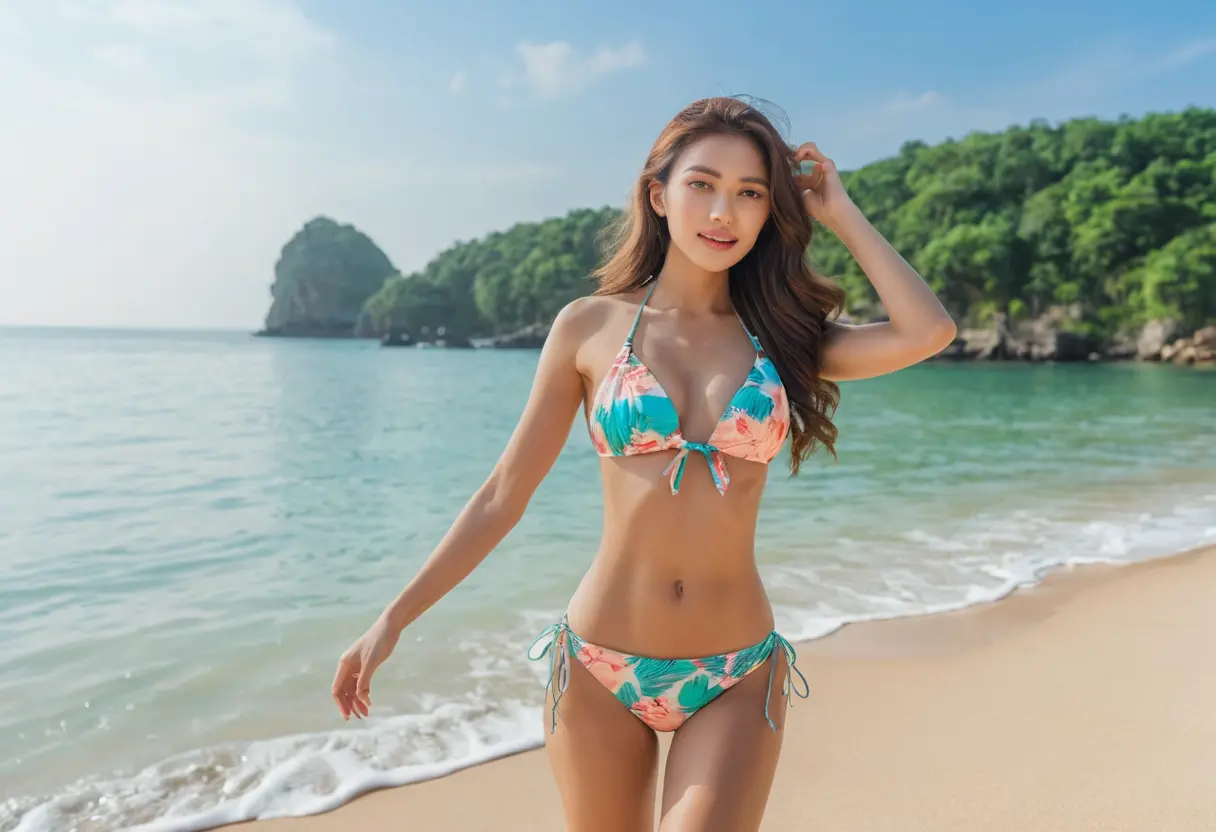Artificial Intelligence (AI) has been rapidly transforming numerous industries, and one area where its impact is particularly fascinating is the intersection of fashion and technology. The concept of AI that "undressed" or AI-driven virtual models is not just a futuristic fantasy but a reality that is revolutionizing how fashion is designed, marketed, and consumed. From virtual fashion shows to personalized clothing recommendations, AI is helping reshape the way we think about fashion and technology. In this article, we will explore how AI that undressed is changing the fashion industry, how it benefits designers, consumers, and retailers, and what this means for the future of fashion technology.
One of the most innovative uses of AI in fashion is the development of virtual models. These AI-powered avatars can be used to showcase clothing and accessories in a way that is both cost-effective and sustainable. Virtual models are not bound by physical limitations, which means they can "undress" and change outfits instantly, allowing designers to experiment with various looks without the need for physical prototypes. This reduces waste and improves efficiency in the fashion design process.

Moreover, virtual models have the potential to represent a wide range of body types, ethnicities, and ages, which is an important step toward inclusivity in fashion. Brands and retailers can create virtual models that appeal to a broader demographic, promoting diversity and expanding their reach. This technology also enables consumers to engage with fashion in an entirely new way, as they can "dress" virtual models in various outfits before making a purchasing decision.

AI is also transforming the shopping experience for consumers. With the help of machine learning algorithms, retailers can offer personalized clothing recommendations based on a customer's browsing history, preferences, and past purchases. AI systems can analyze vast amounts of data to understand individual tastes and predict future buying behaviors.

Additionally, AI can suggest clothing items that complement a customer's existing wardrobe, creating a more streamlined and efficient shopping experience. AI-driven virtual fitting rooms allow consumers to try on clothes virtually, eliminating the need for physical try-ons and helping customers visualize how a particular item will look on them before making a purchase.
These personalized experiences increase consumer satisfaction and loyalty, as shoppers feel that their needs are being understood and addressed in real-time. As AI continues to evolve, the potential for even more sophisticated personalization is limitless, allowing for a truly bespoke shopping journey.
The fashion industry has long been criticized for its environmental impact, from excessive waste to the carbon footprint associated with manufacturing and transportation. However, AI is playing a pivotal role in reducing this impact by streamlining production processes and reducing the need for physical samples.
AI-powered design tools allow designers to create digital prototypes, eliminating the need for physical garment production in the early stages of design. This not only reduces waste but also minimizes the consumption of resources like fabric and energy. Furthermore, AI-driven predictive models can help manufacturers optimize supply chains, ensuring that clothing is produced in the right quantities, reducing overproduction,https://www.undressaitool.com/ and ultimately reducing the industry's environmental footprint.
AI has become a crucial tool in fashion forecasting, allowing designers, retailers, and brands to predict trends and consumer preferences with greater accuracy. Machine learning algorithms can analyze consumer behavior, social media trends, and even runway shows to identify emerging fashion trends. This allows fashion brands to stay ahead of the curve and offer designs that are more likely to resonate with consumers.
AI-driven analytics can also help brands determine the optimal pricing for their products, taking into account factors like consumer demand, competition, and seasonal variations. By leveraging AI in fashion forecasting, businesses can make more informed decisions about what to produce, when to release products, and how to market them effectively.
While AI is undeniably transforming the fashion industry, there are challenges that need to be addressed. For instance, the ethical implications of using AI-powered virtual models, particularly around issues of body image and diversity, must be carefully considered. Additionally, the reliance on AI in fashion could lead to job displacement in certain areas of the industry, such as traditional design and retail roles.
Moreover, while AI has the potential to revolutionize fashion, it is not without its limitations. For example, AI-driven design tools may not yet be capable of replicating the creativity and intuition of human designers. There is also the issue of data privacy, as AI systems rely heavily on consumer data to offer personalized experiences, raising concerns about how that data is collected and used.
Despite these challenges, the future of AI in fashion looks bright. As AI technology continues to improve, it will likely lead to even more immersive and innovative experiences for both designers and consumers. From fully automated fashion shows to AI-driven collaborations between designers and consumers, the possibilities are endless.
AI is undoubtedly revolutionizing the fashion industry in profound ways. From virtual fashion models to personalized shopping experiences, AI-driven innovations are making the fashion world more inclusive, efficient, and sustainable. While challenges remain, the potential of AI to reshape fashion is vast. As technology continues to advance, the fusion of fashion and AI will likely bring about even more exciting developments, changing the way we design, shop for, and interact with fashion in the years to come.

Exploring the Impact of AI on Virtual Fashion and Digital Clothing Experiences

How to Get Unlimited Coins in Undress AI for Free

Discover the Impact of AI Undressing Technology on Fashion and Privacy

How AI Technology Can Safely Reveal Hidden Details in Photos

Best AI Photo Editing Tools for Automatic Undressing and Image Enhancement

The Future of AI in Fashion and Privacy Unlocking Virtual Undressing Capabilities